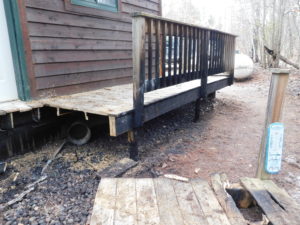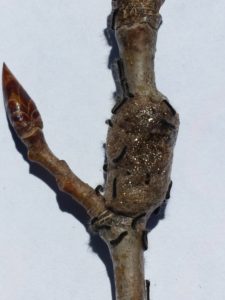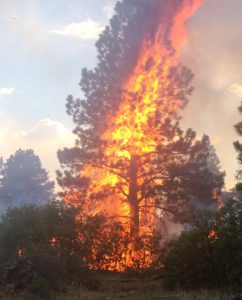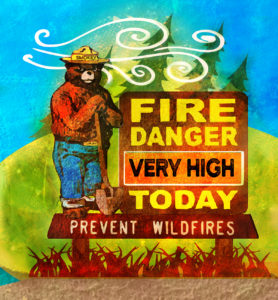Wildfire Report for May 2, 2019
Widespread precipitation has kept wildfire activity low lately. In the past week, 63 wildfires burned 54 acres in DNR protection areas (approximately half the state); 35 homes and other buildings were threatened but saved with firefighter assistance and 3 buildings were destroyed. Debris burning was the most common cause (30 fires); equipment was the second most common cause (17 fires). Other minor causes included power line, campfires, and ash disposal. As the vegetation dries out on the days we don’t receive rain, expect fire danger to increase, particularly in areas where standing dead grass and other dry vegetation remains.
If you choose to conduct outdoor burning, remember that a free annual burning permit is required to burn small piles of debris and to burn in a burn barrel in DNR protection areas. Burning permits are frequently suspended this time of year when fire danger increases. You must check the day’s burning restrictions every day you intend to burn by calling 1-888-WIS-BURN (947-2876) or by checking online at dnr.wi.gov, keyword ‘fire danger’. Larger piles and daytime burning requires a special permit from a DNR Ranger. Piling your debris in a campfire pit does not make it okay to burn during the day. If your property is outside a DNR protection area, check with local officials for burning restrictions.

Remove leaves and needles from your roof, around your foundation and under your deck to prevent ignition by a flying ember.
Firewise Tip: Homeowners are encouraged to make weekly checks around your home or cabin for windblown leaves and needles on your roof, around your foundation, and under decks and elevated porches; keep these areas clean. The debris that collects in these places could be easily ignited by flying embers produced during a wildfire.



 Fire danger is at High to Very High today, May 15 in several areas. The WI DNR is suspending burning permits for debris piles and broadcast burns in many counties due to forecasted winds, low humidity and dry vegetation. Please use caution outdoors with anything that could cause a spark including chainsaws, dragging trailer chains, and even hot exhaust systems from off-road vehicles. For the current fire restrictions, visit
Fire danger is at High to Very High today, May 15 in several areas. The WI DNR is suspending burning permits for debris piles and broadcast burns in many counties due to forecasted winds, low humidity and dry vegetation. Please use caution outdoors with anything that could cause a spark including chainsaws, dragging trailer chains, and even hot exhaust systems from off-road vehicles. For the current fire restrictions, visit 